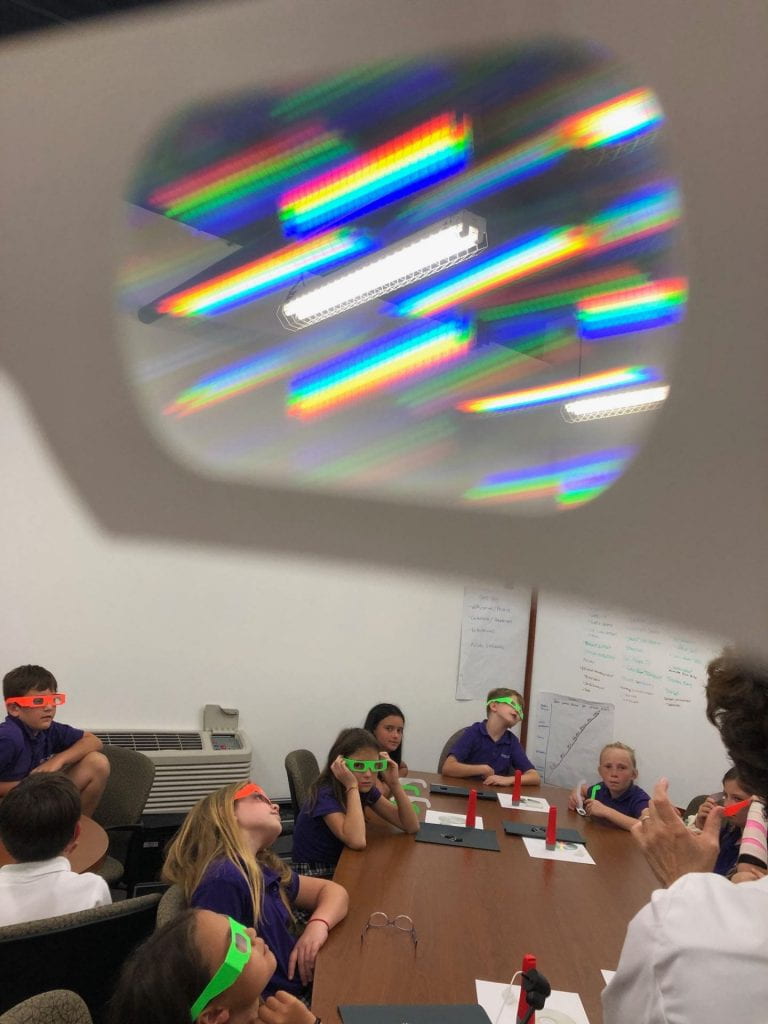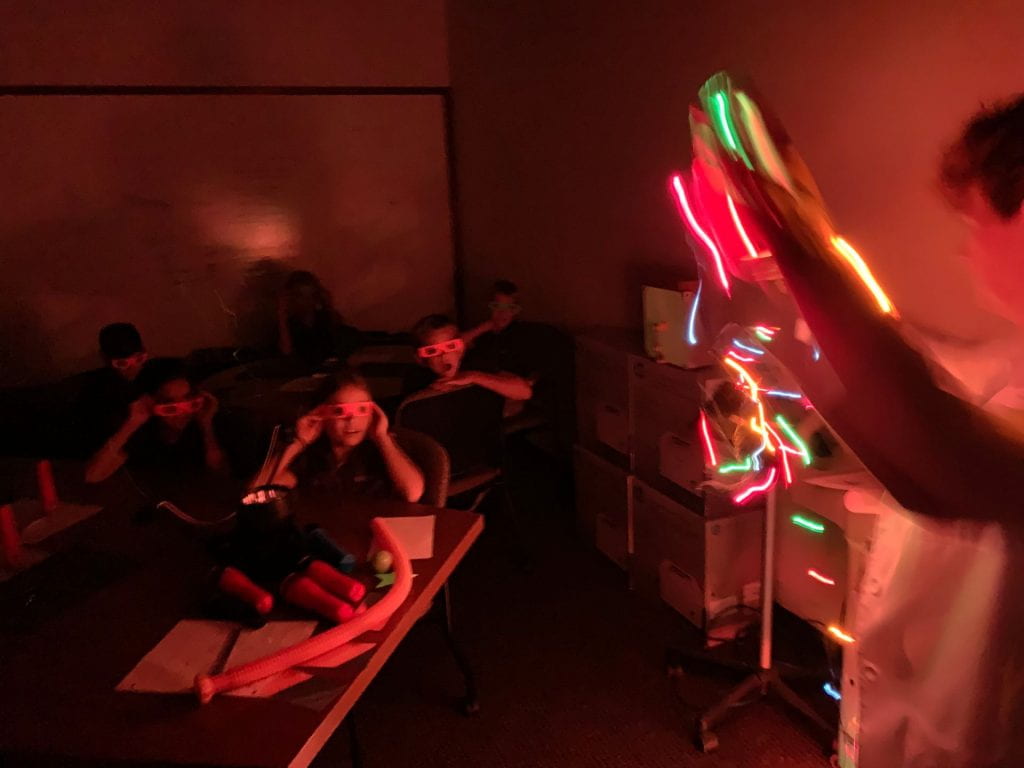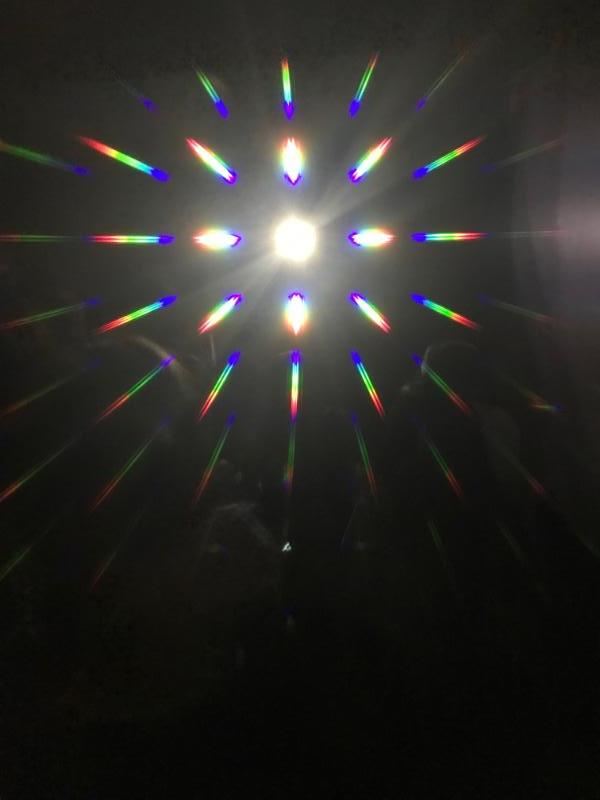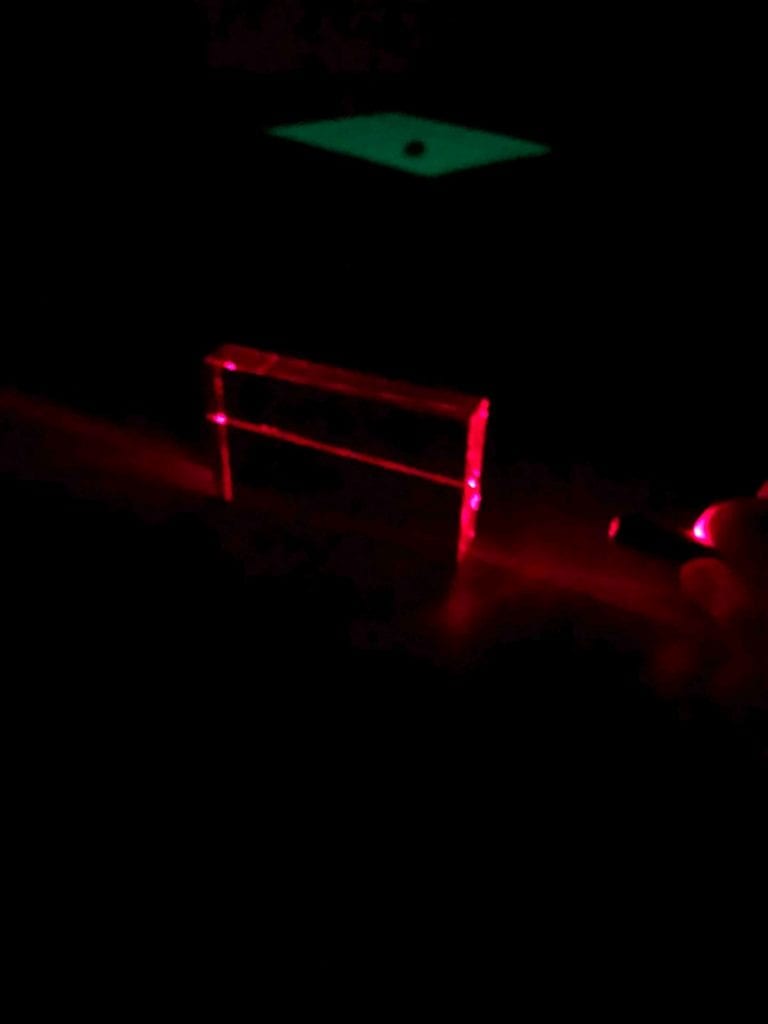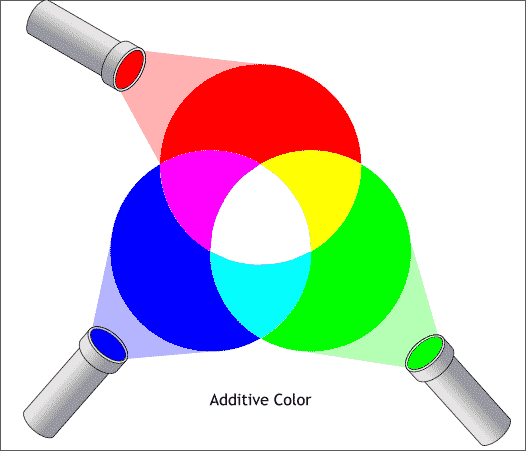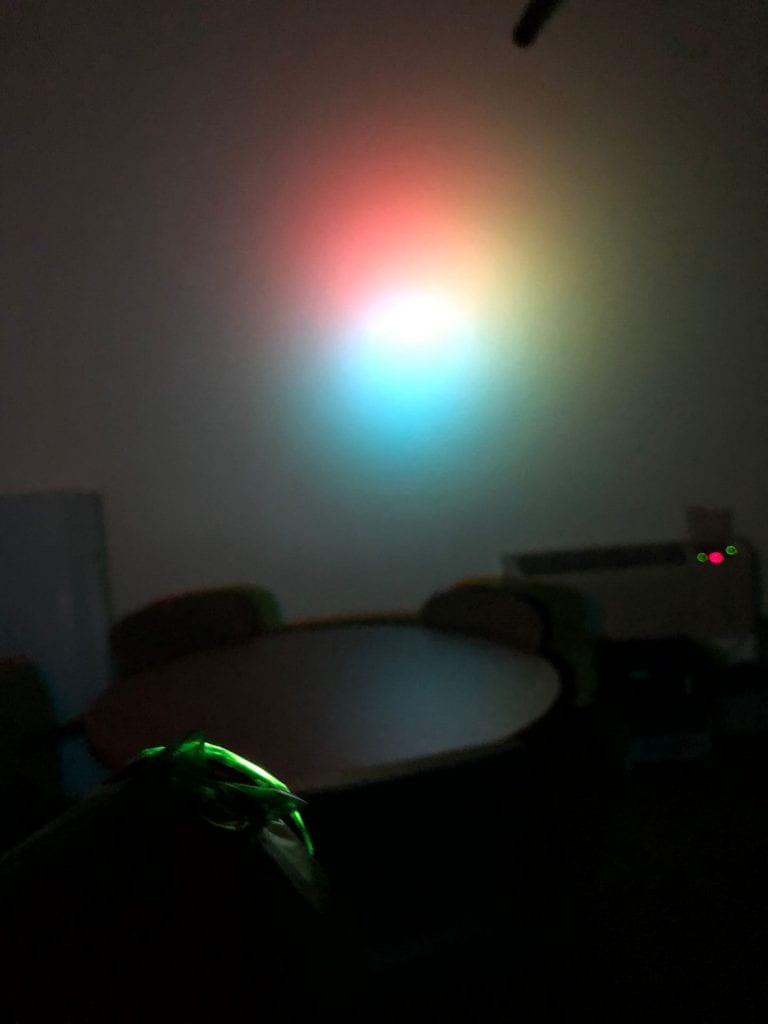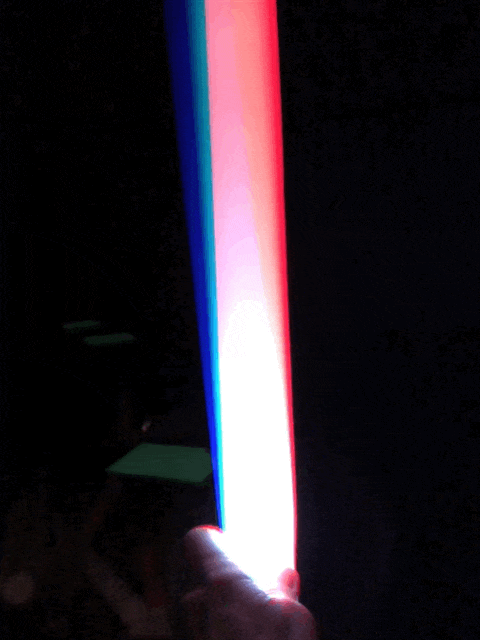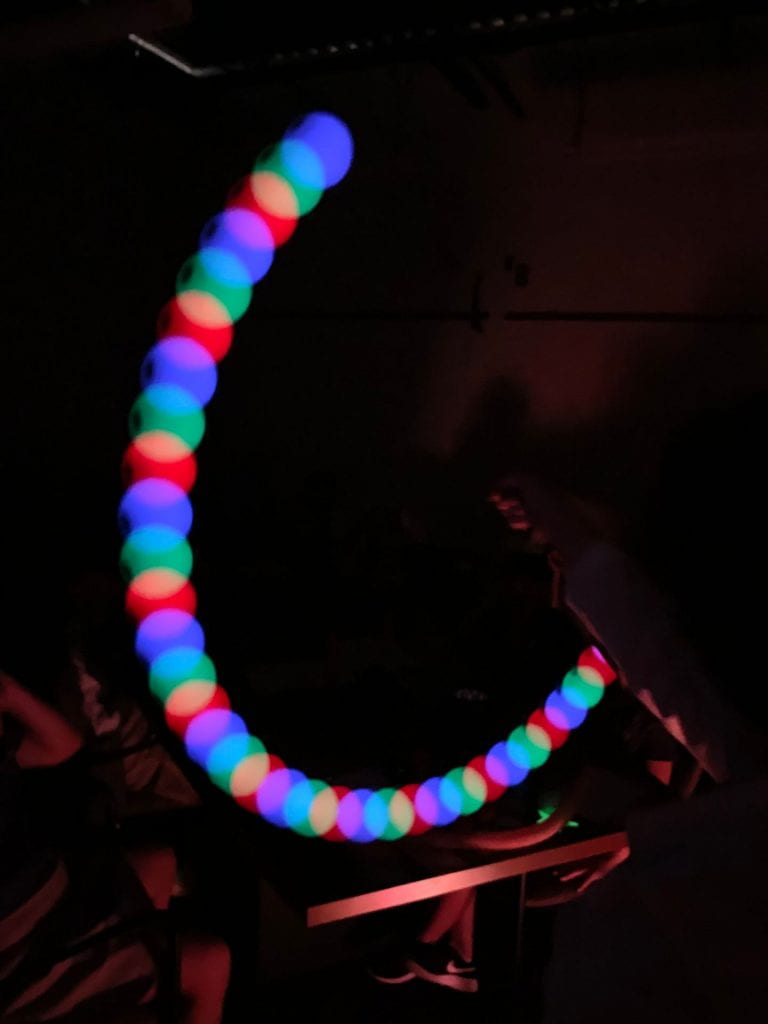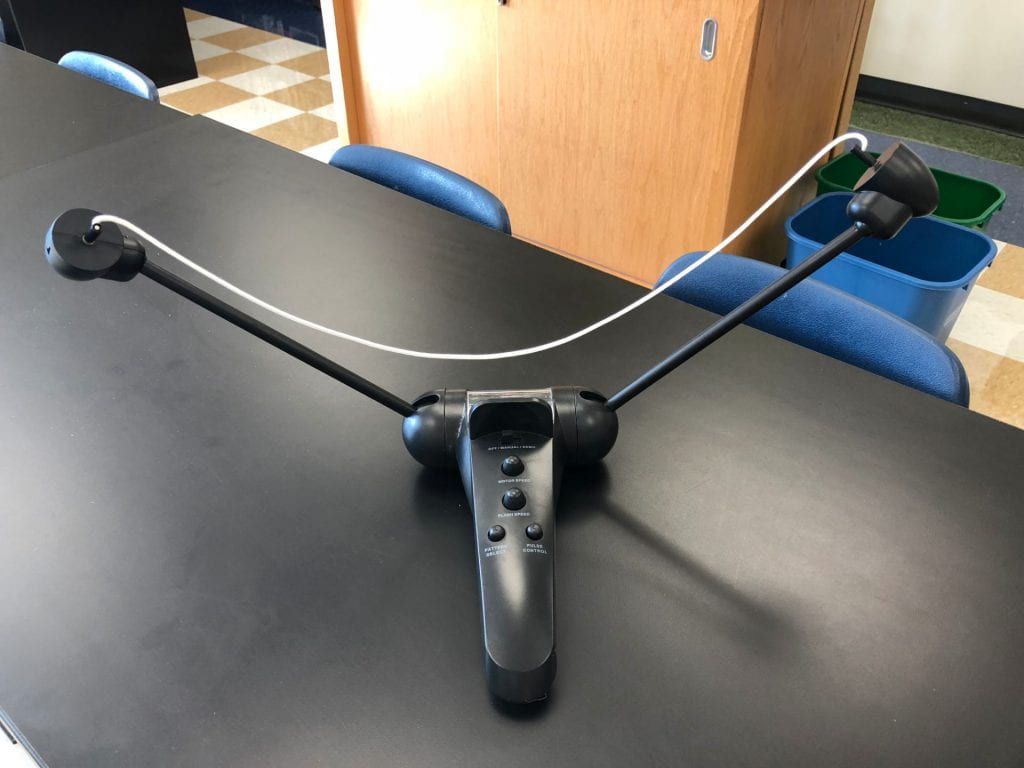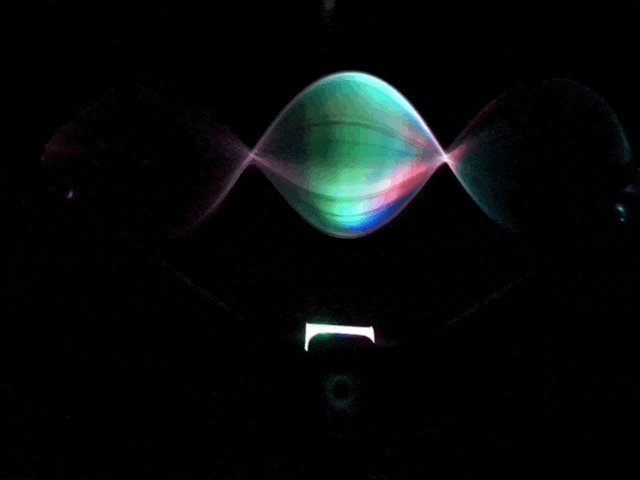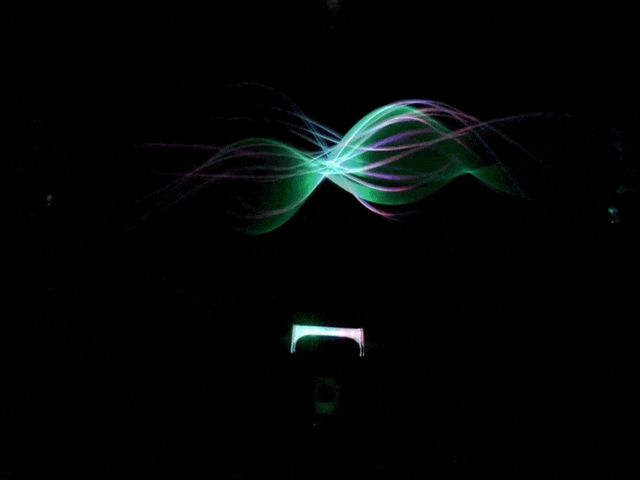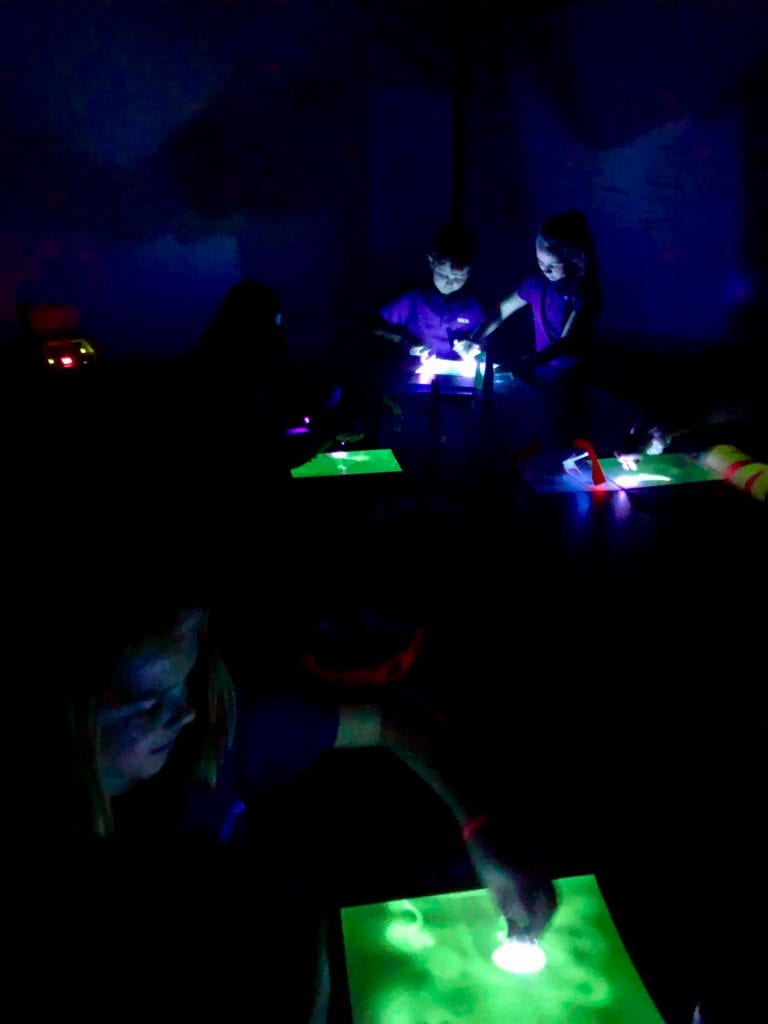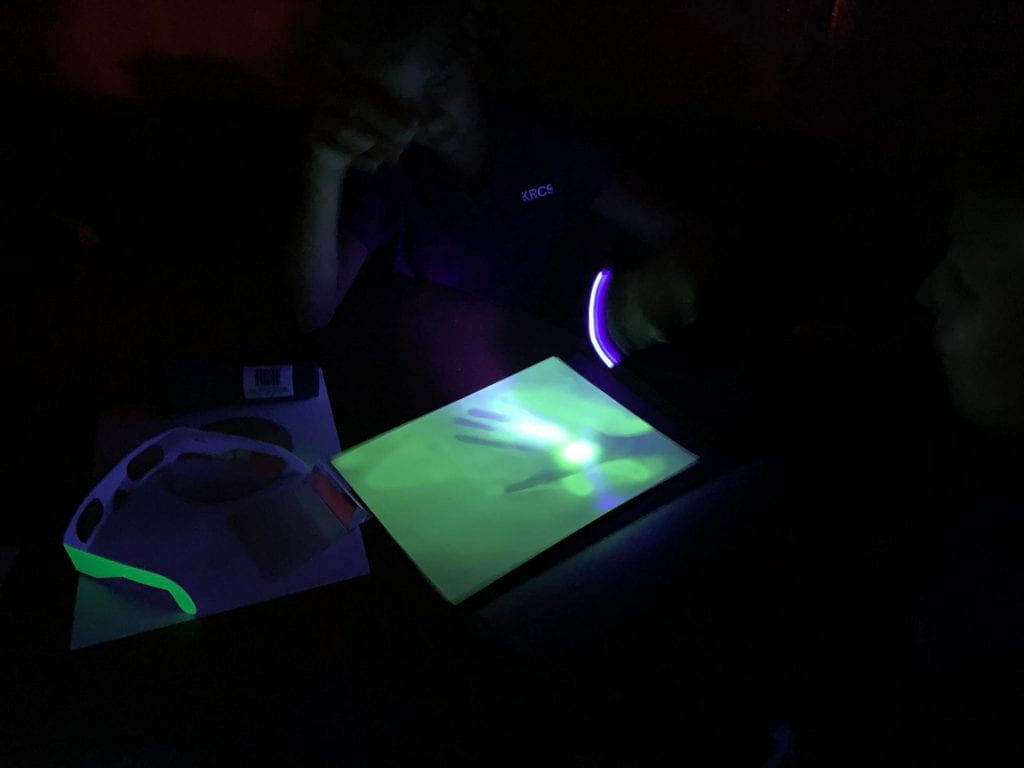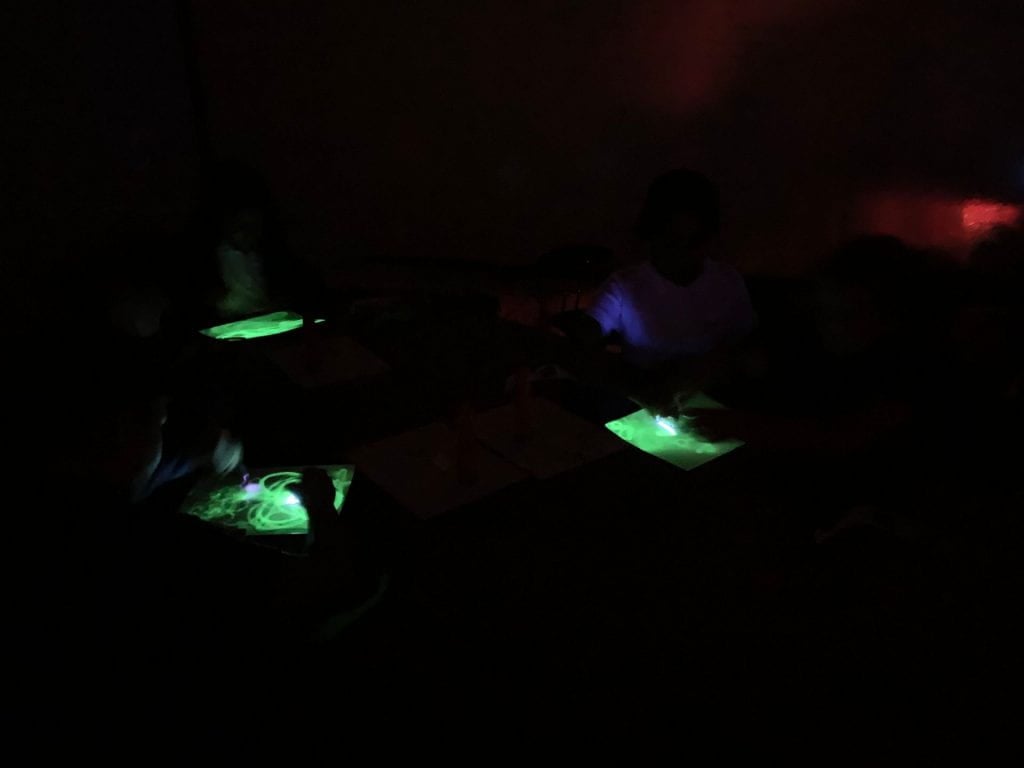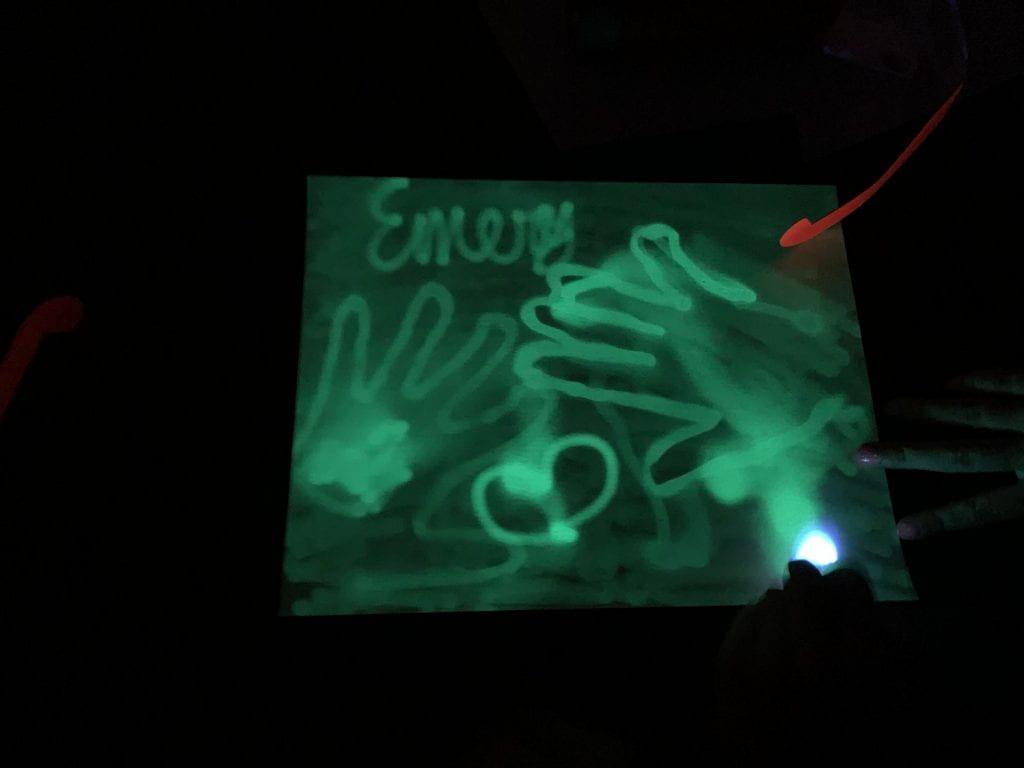Light Lab
And let there be light…
Fourth grade physicists had a fast-paced lab about the properties of light in the IT conference room rather than the science lab, so that we could perform our investigations in complete darkness.
We viewed an amazing light show through our refractive glasses. We used our glasses to look at Christmas tree lights and fluorescent lights too. The colors of the visible spectrum are always in the same order.
We saw the visible spectrum displayed as in the photo below when we looked at the light ball with our glasses. Click here to read more.
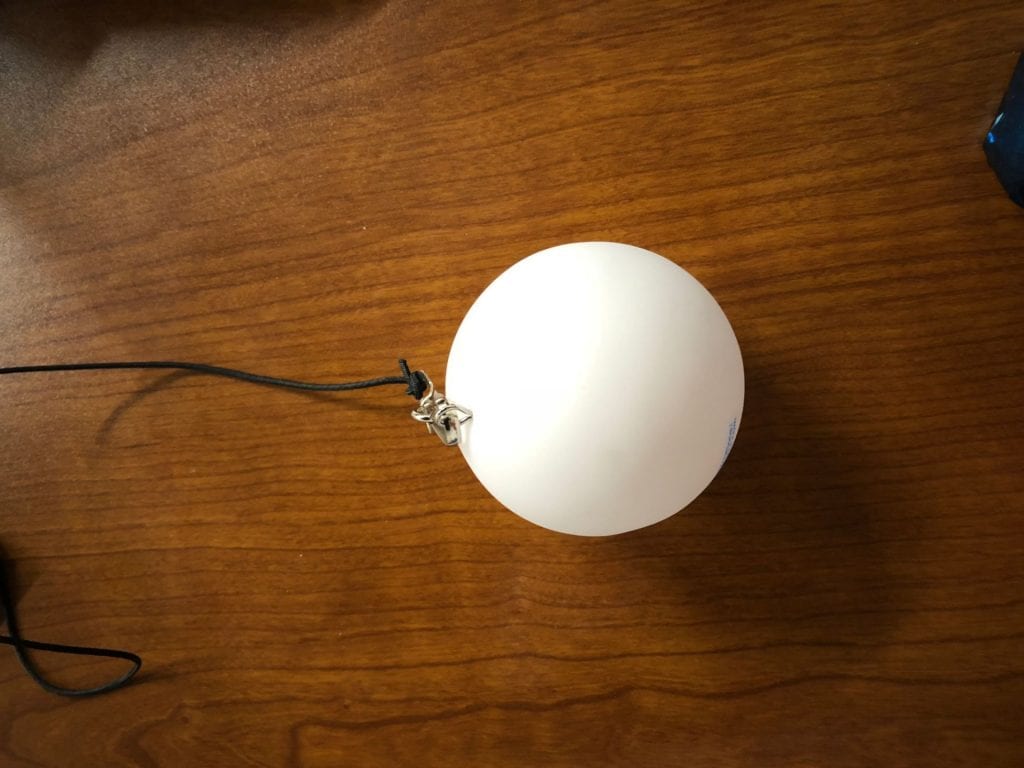
But when we looked at the light produced from a laser, we saw something completely different because it wasn’t white light. The rest of the visible spectrum was missing. Since light moves so fast, we couldn’t see the beam move across the room, but when an acrylic block was placed in its path, the beam was visible because the block caused the beam of light to slow down.
I covered flashlights with cellophane in the primary colors of light – red, blue, and green. What will happen when we overlap the colors? Cyan, magenta, and yellow are seen when two colors mix and white when all three come together.
When I moved this light stick, we could see the three colors of light inside the tube. When the light ball was swung, the colors appeared and seemed to mix before our eyes.
The 3D standing wave machine is a perfect visual of a wave. Click here to learn more.
Finally, we “wrote” on glow in the dark paper with UV flashlights. Click here for more information.
How do you measure light? Does a larger flashlight produce a brighter beam? We looked at the beams produced by several flashlights and learned that light is measured with lumens, and the size of the flashlight is unimportant. We also reflected light by bouncing a beam around the room with flashlights and mirrors. We watched our partner’s pupils when I turned the lights on and off, and observed how our pupils change, like the lenses on a camera.
